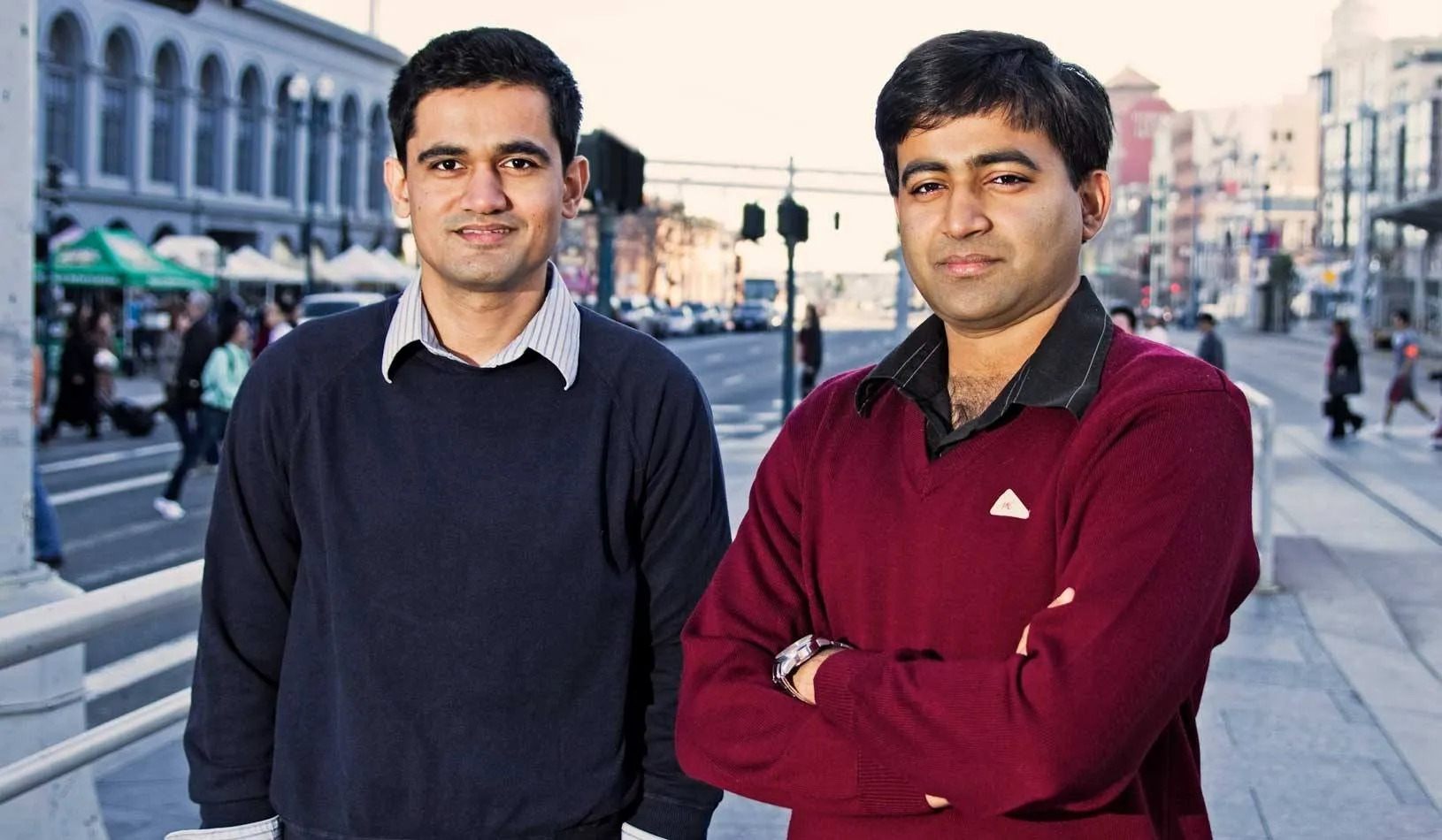Thanks to the mental tools he’d acquired at school, Abheek Anand (left) was ready to switch directions with partner Soham Mazumdar when their first business idea didn’t pan out. They then created an app that was later acquired by Facebook. | Courtesy of Abheek Anand
As an entrepreneur-cum-venture capitalist, Abheek Anand knows what it means to be “on the other side of the table.”
After graduating from Stanford Graduate School of Business in 2009, he cofounded an enterprise that facilitated customer-loyalty programs, which Facebook acquired in 2012. Now he’s a principal at Sequoia Capital’s Singapore office, investing in early-stage technology companies.
Anand credits Stanford GSB with cultivating his people skills, which he admits weren’t highly evolved when he enrolled. Previously, as a developer, he’d had minimal interaction with others. “All I did every day was sit at my desk and write software,” he says.
He realized that a pivot to entrepreneurship would require him not only to learn new hard skills but also, more important, to master the soft skills vital to effective leadership.
“I became more of a people person and less of an introvert at Stanford GSB, and realized that those skills mattered a lot in having a successful career,” Anand says.
His most meaningful class was Interpersonal Dynamics (better known as “Touchy-Feely”), which is designed to help students understand, through structured feedback, how their behavior affects others.
“Every year, I’ve had at least one moment where I’ve referred back to the lessons I learned in that class,” he says.
Shouldering an Entrepreneur’s Responsibilities
When Anand graduated, he aimed to start a business. But as an Indian citizen, he faced greater challenges than most. Making the transition from a student visa to a work visa was difficult, but he relied on support from fellow alumni and staffers at Stanford GSB Alumni Career Services. Once his visa was settled, Anand and his good friend Soham Mazumdar decided to go into business together, and they began looking for a need they’d be inspired to address.
The two failed to get early traction with their first idea, a social video app. Fortunately, Anand was able to put to good use a Stanford GSB class that had equipped him to deal with such obstacles.
“The class on how products fit the market [Aligning Startups With Their Market] gave me the mental tools to understand if my product is meeting a real need, and how to change direction if it’s not,” Anand says.
At that point, some neighbors who owned small businesses suggested that the partners create a service that would encourage customer loyalty and repeat purchases. Through their subsequent startup, Tagtile, customers making in-store purchases could use the Tagtile app to earn rewards, and merchants could use purchasing data to target messages to those customers.
“In the early days, the business needed to focus on the product and technical side, and that’s what we did. Eventually, we needed to turn our attention to the sales and marketing side, and Facebook seemed like the right distribution partner to support us with that,” Anand says.
As a solid idea and hard work would have it, distribution talks blossomed into an acquisition, and Facebook brought the team along. While Anand was working as a product manager there, a chance meeting with some Sequoia Capital partners he knew from Stanford GSB’s Venture Capital Club led to his next opportunity: an offer to become a principal at Sequoia’s office in Mumbai, India.

“This was a really great team that I wanted to work with at some point,” he says, “and I was at a point in my life where I could change countries and work on something completely new.”
Anand has since transferred to Sequoia’s Singapore office, where he invests in companies across South Asian markets. He credits the diversity of his Stanford GSB classmates with preparing him to work with various international colleagues and entrepreneurs.
“I was super left-brain and analytical, and I didn’t know what I didn’t know,” he says. “Being at Stanford GSB taught me that there are so many different ways to look at the same thing. Being really good at something means having those different points of view in your head. I learned a lot more from people who are completely different from me.”
Photos courtesy of Sequoia Capital


